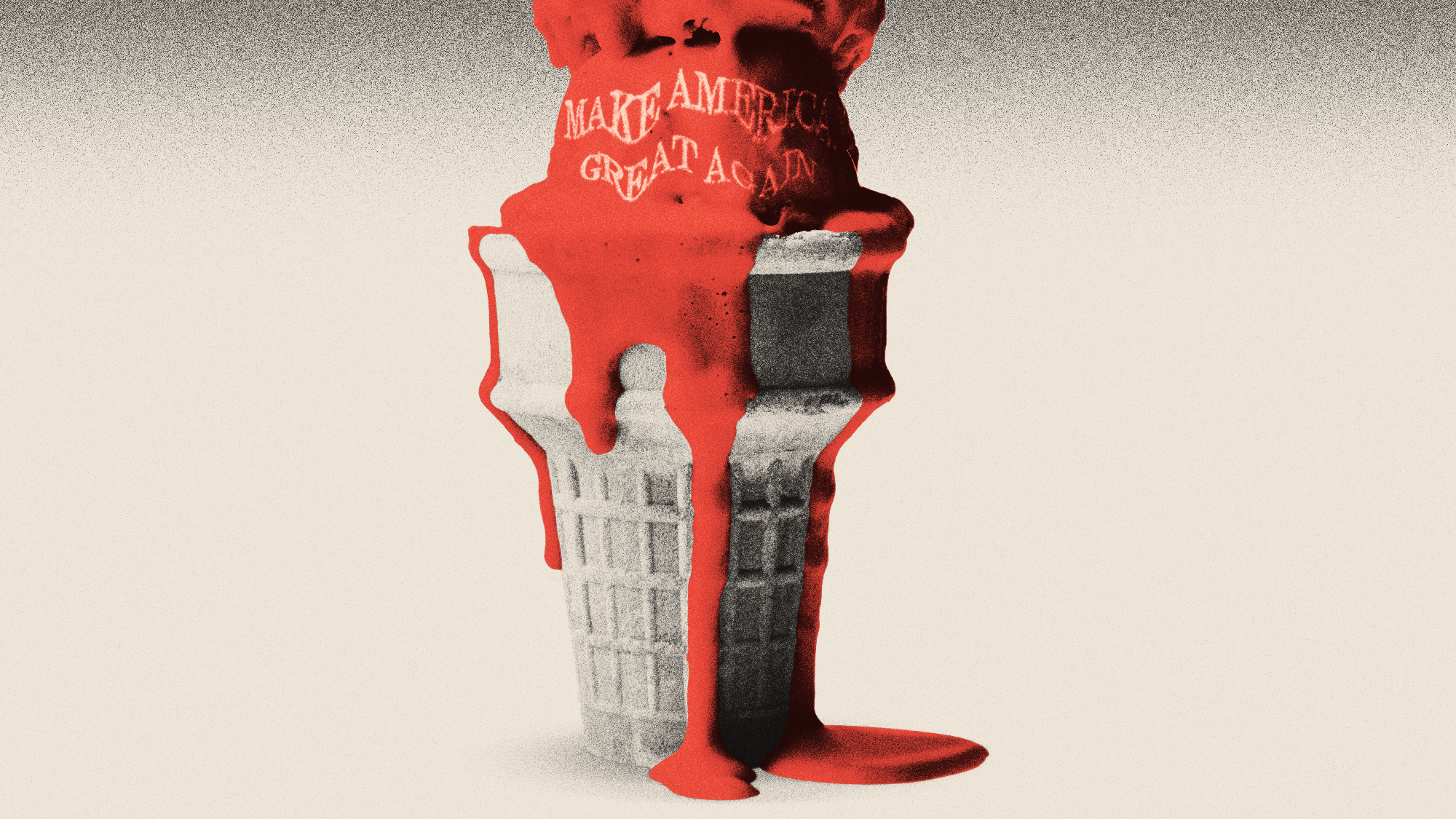Exhibit of the week: Llyn Foulkes
The New Museum's retrospective proves the artist “more than worthy of his newfound blue-chip status.”
New Museum, New York
Through Sept. 1
Llyn Foulkes might be the quintessential maverick, said Michael Duncan in Art in America. “Known for his cantankerous rectitude,” the 78-year-old Los Angeles–based painter has spent a half-century dreaming up formal innovations, flirting with breakthrough commercial success, and turning to something new every time the market threatened to catch up with him. But his “righteous anger” and dedication to craft have recently caught the attention of collectors and other artists, and this retrospective proves him “more than worthy of his newfound blue-chip status.” In his large-scale works from the past 30 years, Foulkes frequently portrays himself as a superhero who has tried but failed to do meaningful battle with the “soul-crushing” force of mainstream media culture. At least he now has our attention.
The Week
Escape your echo chamber. Get the facts behind the news, plus analysis from multiple perspectives.

Sign up for The Week's Free Newsletters
From our morning news briefing to a weekly Good News Newsletter, get the best of The Week delivered directly to your inbox.
From our morning news briefing to a weekly Good News Newsletter, get the best of The Week delivered directly to your inbox.
As this “dazzlingly weird” retrospective shows, it’s never been easy to say what “a Foulkes” looks like, said Ariella Budick in the Financial Times. His early mixed-media paintings, created in the 1950s after he served briefly as an Army private in postwar Germany, were “fantastically morbid”—“glutted with dead animals, singed newspapers, and blackened wood.” Yet just as that body of work started to receive acclaim, Foulkes shifted gears, and by the 1960s “embraced the clean, bright lines and primary colors of pop.” He finally came fully into his own in the 1980s, when his free-floating ire began manifesting itself in “bizarrely funky” multi-media works that treat contemporary life as a horror show, said Ken Johnson in The New York Times. In Pop, a “10-foot-wide marvel of comic magic realism and meticulous craftsmanship” that Foulkes completed in 1990, a stand-in for the artist, who’s wearing a Superman shirt, stares bug-eyed into his television while his son reads the Mickey Mouse Club pledge from a notebook. Accompanied by an oddball musical soundtrack, the painting makes “a transporting experience” out of “all-American middle-class dread.”
“For my money, the most horrifying work in the show” is 2006’s Dalí and Me, said Thomas Micchelli in Hyperallergic.com. A mashup of self-portrait, Salvador Dalí’s twirled mustache, and two crooked lines of cow’s teeth, this “seminal work” pulls together a few of the common threads that run through Foulkes’s oeuvre. Dalí’s playful influence can be seen even in a 1953 painting that Foulkes created at age 19, and “malign comedy undergirds everything he does.” It’s not uncommon that a man so young would rage at mortality and “the chasm between America’s promise and reality.” Foulkes is unusual because he “has always kept that 19-year-old inside of him. His most forceful work is a fulfillment of his youthful visions.”
A free daily email with the biggest news stories of the day – and the best features from TheWeek.com
-
 Metaverse: Zuckerberg quits his virtual obsession
Metaverse: Zuckerberg quits his virtual obsessionFeature The tech mogul’s vision for virtual worlds inhabited by millions of users was clearly a flop
-
 Frank Gehry: the architect who made buildings flow like water
Frank Gehry: the architect who made buildings flow like waterFeature The revered building master died at the age of 96
-
 Is MAGA melting down?
Is MAGA melting down?Today's Big Question Candace Owens, Tucker Carlson, Laura Loomer and more are feuding